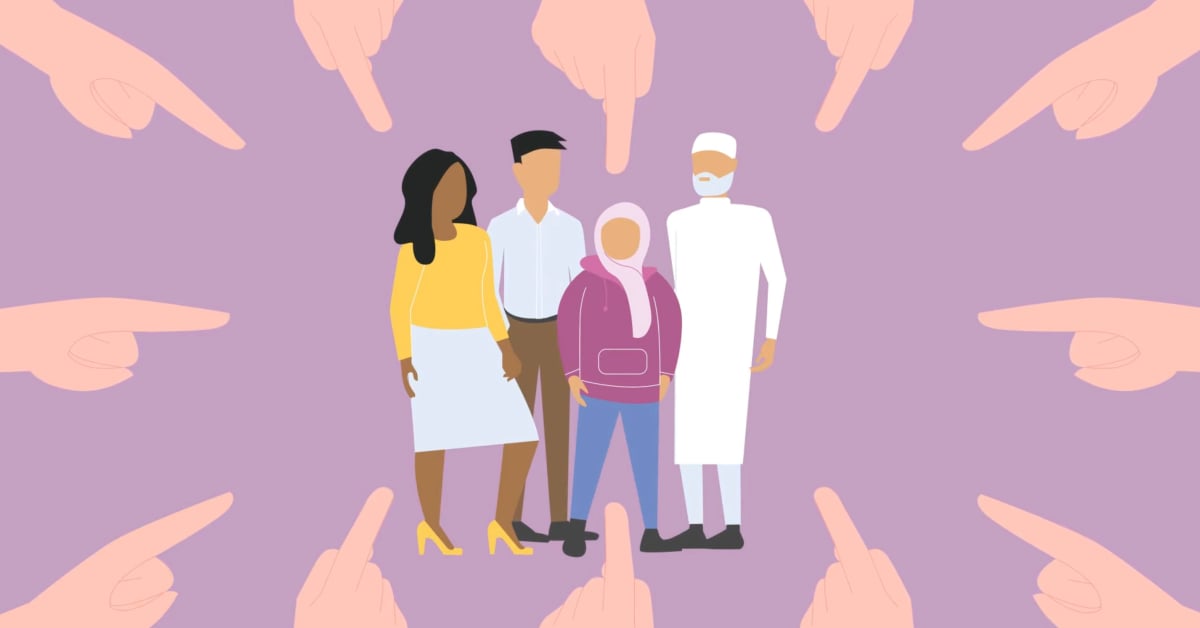Islamophobia has reached epidemic proportions - what can be done to address it?
2 October 2025 | By: Prof Peter Hopkins | 2 min read
Islamophobia is on the rise but working collaboratively and in partnership could help to address its harmful effects.
Sharing insights from his recently published book about Islamophobia, Professor Peter Hopkins from our School of Geography, Politics and Sociology, reflects on his research to understand and challenge anti-Muslim racism.
Contents:
- Islamophobia is on the rise
- New book about Everyday Islamophobia
- The Islamophobia Industrial Complex
- How can we tackle Islamophobia?
Islamophobia is on the rise
In a report in 2021, the UN Special Rapporteur on Freedom of Religion or Belief stated that Islamophobia had ‘escalated to epidemic proportions’. The EU Agency for Fundamental Rights reported a sharp rise in racial discrimination against Muslims since 2016, and the Runnymede Trust found a 335% increase in Islamophobia in the UK in the year to February 2024.
Islamophobia is a form of anti-Muslim racism that targets Muslims and other who are mistaken for being Muslim. It can be structural and institutional, as well as personal and every day. It operates through verbal and physical attacks, damage to property or buildings, the distribution of discriminatory literature, through demonstrations and marches, hate speech, or through personal attacks or intimidation.
New book about Everyday Islamophobia
Having conducted research about Islamophobia over the last twenty-five years, I recently published a new book on Everyday Islamophobia. Rather than seeing everyday Islamophobia as some sort of low-level form of racism – and so not as important as more global or transnational forms of Islamophobia - I consider the diverse factors that shape it from global and national politics through to issues of the media and stereotypes of gender, migration, and the body. I consider the impact it has on its victims and on wider society, explore responses to this, and review strategies for addressing it.
Examples of global and state-sponsored Islamophobia include Trump’s controversial ‘Muslim ban’ that restricted travel from several Muslim-majority countries, or the internment of Uyghur Muslims in China for the purposes of re-education. Added to this are the Islamophobic declarations of leading politicians or public figures which often lead to sharp increases in the number of Islamophobic incidents in the days and weeks that follow. The media also plays a key role in aiding the spread of Islamophobic blog posts, websites and other coverage, and well-funded right-wing think tanks alongside far-right activists and right-wing religious groups work in concert to promote everyday Islamophobia.
The Islamophobia Industrial Complex
These groups are all part of the Islamophobia Industrial Complex which I introduce in this book. An industrial complex develops when finance, business, and trade become enmeshed within specific political, social, and cultural systems and generates a set of profits and financial beneficiaries, and often a sense of superiority and power for those involved, regardless of how effective they are.
The Islamophobia Industrial Complex then, is the complex web of groups, agencies, organisations, and individuals who are financially and ideologically benefiting from promoting Islamophobia and anti-Muslim hatred. This is the complex layers of resources, funding, and systems in place to promote, sustain, and enhance the spread of everyday Islamophobia.
Examples of members of the Islamophobia Industrial Complex include activists who are paid large salaries to produce Islamophobic websites, blogs or related materials, national and transnational groups that are set up to organise Islamophobic campaigns and protests, and public intellectuals and other figures who financially benefit from spreading Islamophobia.
How can we tackle Islamophobia?
As Islamophobia is so complex, it requires a diverse set of tactics to be tackled. Unfortunately, there are no quick fixes or easy answers. Some useful steps would include the following. First, all governments must disinvest from, and work quickly to abolish, counterterrorism measures that unfairly target Muslim communities. Second, the mainstreaming of right-wing issues needs to be challenged. Third, negative media coverage, stereotyping, and imagery about Muslims and Islam including on television, the print media and on social media needs to be addressed. Fourth, strong counter-narratives to overturn the problematic stereotypes about Muslims and Islam can play a key role in tackling Islamophobia.
Collaboration, partnership, and collective working is crucial here given the size and scale of the Islamophobia industrial complex that is promoting Islamophobia. There are many innovative educational initiatives, community-engagement approaches, and important strategies of resistance have been developed, In addition to this, an approach that promotes and advances anti-racism and anti-Islamophobia is crucial.
'Committing to anti-racism involves describing and understanding racism and Islamophobia and to call this out and to do this on every occasion it arises. This is about being vigilant to Islamophobia and speaking out against it, to dismantle it in all cases, and to be an ally to those experiencing it.' Professor Peter Hopkins, School of Geography, Politics and Sociology
You might also like
- read or purchase Professor Hopkins’ book on Everyday Islamophobia
- watch the recording of our INSIGHTS Lecture: Everyday Islamophobia by Professor Peter Hopkins
- read Professor Hopkins’ recent piece: What has changed in Muslim young people’s engagements with politics?
- read the 2024 report: Young Muslims in Scotland: politics, racism and the media
- learn more about Professor Peter Hopkins’ work
- visit Professor Peter Hopkins and Professor Heather Smith's shared website on anti-racism
- explore Geography at Newcastle University and its international reputation for excellence in geographical research and teaching
